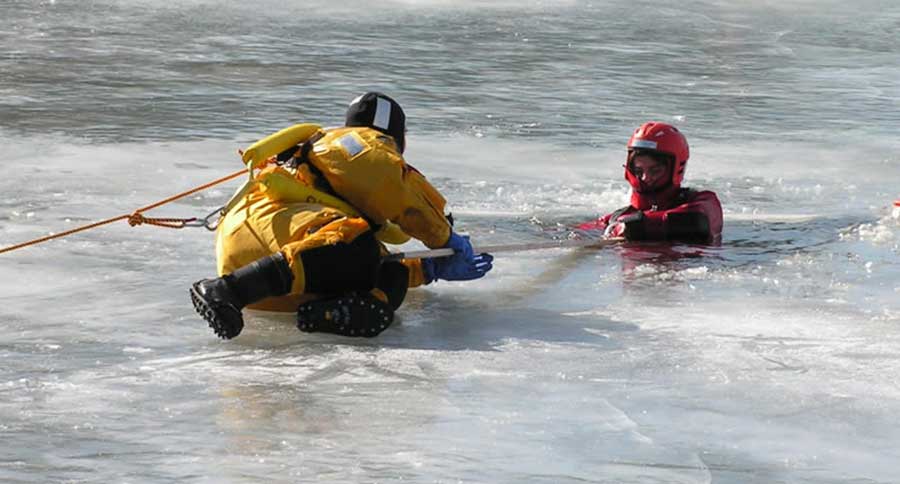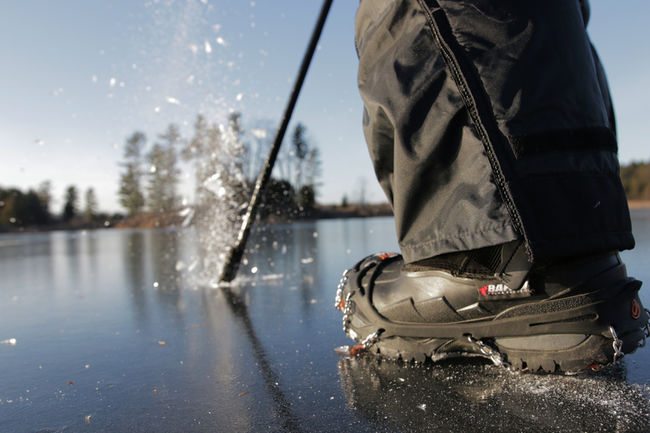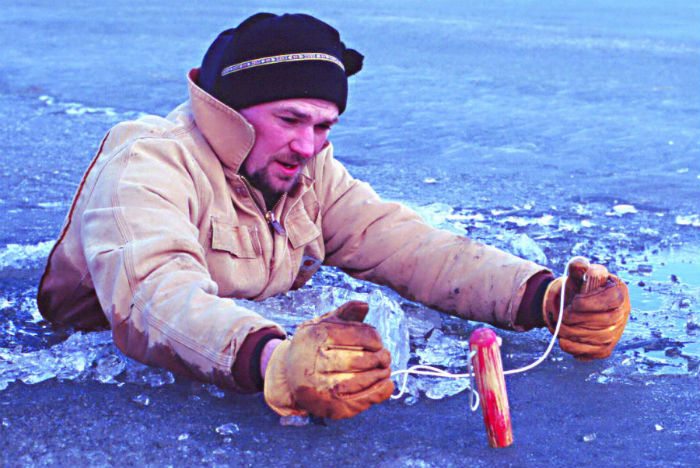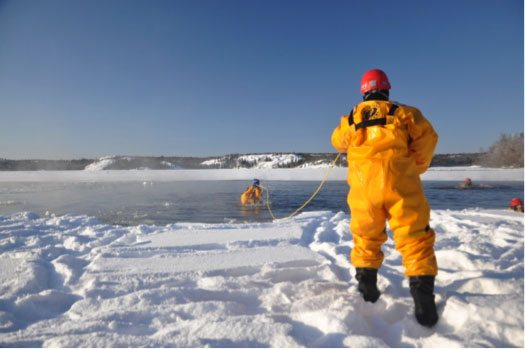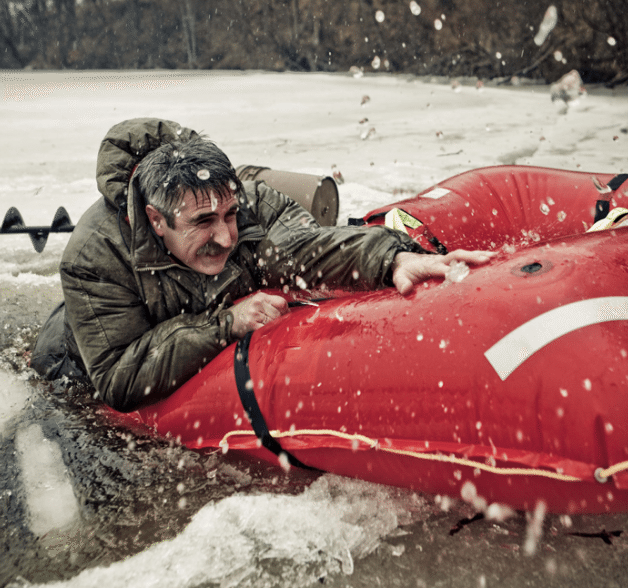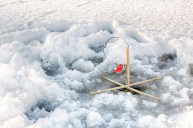Every year, hundreds of people go through the ice of frozen lakes and rivers. Here are 10 ice safety items to help make sure you come home alive.
Every winter ice fishermen hit the ice and outdoor enthusiasts ride their snowmobiles and ATV's over frozen lakes and rivers. And every year hundreds of people break through the ice. Some survive, and some don't. Ice safety is not something to be underestimated and trivialized.
Here's a list of 10 items that you should carry with you to help ensure that, should the unexpected occur, you have a safe and enjoyable time when travelling over the ice.
1. Ice Spud
Carry this long tool to constantly check the condition and thickness of early ice especially, as well as the condition of ice in dubious areas. Of course ice thickness is not consistent throughout a body of water, and ice is always shifting and dangerous. Don't be fooled into thinking that just because the ice is thick in one area it is uniform throughout the lake.
2. Personal Flotation Device or Suit
Nowadays full body suits (jackets and pants) are designed to keep you warm and keep you floating should you break through the ice. Several manufacturers offer apparel that is padded with Thinsulate designed to keep you nice and toasty, and that also serve as a flotation device. These jackets and jumpsuits are, in my opinion, one of the greatest inventions of our day for folks who like to travel over the ice.
They may be a little pricey, but what is your life worth?
There are also smaller, less cumbersome yoke-style flotation vests that you can wear, that are CO2-cylinder activated. These too are a great choice and could save your life should you hit cold water unexpectedly.
3. Ice Picks
Make your own or purchase a set of ice picks; they're inexpensive and worth it. Keep them slung around your neck and be ready to use them to pull yourself up onto the ice should you fall through. Many winter flotation jackets already have them attached.
4. Ice Cleats
Ice cleats are another matter of required clothing when travelling across the ice. Ice is slippery; cleats make it possible to walk across the ice, maintain your balance and avoid taking an injurious spill and ruining your day (especially when scampering to a triggered tip-up). Don't leave home without them.
5. Whistle
A whistle should be part of your safety gear no matter what time of year it is or what activity you're involved in, whether hunting, fishing, riding or hiking. The sound of a whistle travels further and is more audible than the human voice. A whistle attracts attention and is a universal signal for distress. You can signal people from a long distance away should you fall through the ice. This simple little item should also be wrapped around your neck or strung to a breast pocket.
6. Rope
We can't realistically carry ladders with us out onto the ice to reach someone who's fallen through, but we can easily carry 30 feet of rope to toss to a victim in the water. Tie a fat knot in the throwing end too, to give them something that their numb hands can grip rather than letting the rope slip through when their motor functions begin to dwindle.
7. Extra Set of Winter Clothes and a Blanket
If you or someone is rescued from the icy drink, you'll want to get yourself or them as dry and warm as quickly as possible. Carry an extra set of dry clothes with you, along with a towel and a wool blanket. Wool Army blankets don't take up much room and can be a life saver, or at least keep you warm even if you don't go through the ice.
8. Cell Phone
It's practically unnecessary to mention carrying a cell phone these days, since virtually everyone already carries one. Calling for help is a no-brainer reason to have one, but also the light feature on a smartphone can be used to signal someone in low light conditions. I usually keep mine in a plastic waterproof case when travelling in the outdoors.
9. Nebulus Emergency Flotation Device
The Nebulus flotation device is something of a godsend to users of snowmobiles, ATVs or just anybody who travels over the ice. About the size of a briefcase, with the pull of a ripcord this packet inflates to a full-size raft capable of holding two humans and their machine via a tether line. It can literally save your life when you need it most. I'm considering carrying a Nebulus in my ice fishing sled as I walk over the ice.
10. Portable Ice Shanty
Even if you don't intend to fish from an ice shanty or tent they are probably worth bringing along anyway. They provide warmth and shelter should the weather turn nasty, they're not too cumbersome when folded up, and should you need a place to get out of the elements after pulling yourself out of the water they too can be a godsend, especially if you're far from shore.
Be safe, be smart.
Like what you see here? You can read more great articles by David Smith at his facebook page, Stumpjack Outdoors.
NEXT: Boil Your Coffee with Methane Flame From a Hole in Lake Ice
